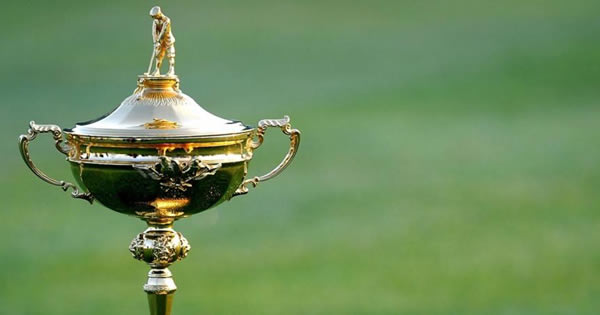Vision at the Ryder Cup
25th Sep 2018
With the Ryder Cup starting on Friday, all eyes are on the golfing world as the tournament promises to be one of the best yet. Both Tiger Woods and Justin Rose are heading to Paris off the back of big wins, and for the first time ever, all of the world's top 10 ranked gofers will be featuring in the tournament.
I will be watching with interest, and particularly paying attention to the putting techniques that the players are using. Over the years I have worked with several golfers to investigate their visual approach to putting and have found each to have very different techniques. Many of the quirks and idiosyncrasies that the players use will not be visible via the TV screen. I use the Tobii 2 eye tracking glasses to monitor many aspects of putting routine. The most researched area that the eye tracker gives me access to is the players use of Quiet Eye technique. Quiet Eye (QE) was first discovered by Joan Vickers in the 1990s. She recognised that players who were better at putting held their final gaze on one specific point on the golf ball for an extended period of time before they began their stroke. Research went further than this and demonstrated that QE duration could not only differentiate elite golfers from novices, but could also be seen as a difference between good shots and bad shots. So an expert golfer would show a longer QE period on putts that were holed compared to putts that missed. Sam Vine and his group at Exeter University have carried out much research in to QE, including showing how it can be trained and brings about improvement in golf putting. In fact, he has shown that even elite golfers can improve by around 6%, or 2 shots per round through the use of QE training.
It is not just QE that I would use when working with a golfer. Many of the most common putting mistakes are due to lack of understanding of the visual system. For example, any slight tilt or angle of the head is going to make the eyes offset and mean that any information they send to the brain about alignment and distance will be skewed and unreliable. Yet how often do you see golfers glance at the hole once they are in the address position and then make slight changes to their set up? Once you have got as far as the address position you just need to trust that you read the green correctly when your eyes were in a more reliable position. Your line to the hole will always look 'wrong' from this position so any changes made at this stage are not going to be helpful – yet when under the extreme pressure that is bound to occur during the Ryder Cup it can be very difficult to trust your first read and just go with it.
Eye dominance is another interesting factor that can affect putting. Your dominant eye is the one that you align to and it feeds information to the brain a split second faster than the other eye. This speed is not important in a self-paced sport like golf, but you do want your dominant eye to have clear view of the line you want the ball to roll along. This means that if you are right handed and right-eye dominant (or left handed and left-eye dominant), the bridge of your nose will be a block to viewing this line. From a purely visual point of view, it would be better for these players to have the ball slightly further out in their stance, whereas cross dominant players (right handed/left eyed or left handed/right eyed) are best having their dominant eye directly over the ball. I wouldn't want to mess around with the stance and head position of a player if putting is going well but it is interesting to mote who adopts the ideal stance naturally, and if someone is struggling with their putting, this tweak could be useful to them.
I am sure that over the course of the tournament there will be many enthralling twists and turns before we know whether Europe will manage to win the trophy back from the US but it wouldn't surprise me if the best putting team ended up as the overall winners. I for one will be watching with interest to see the tactics and techniques the players put into place, and which are most successful on the most demanding of stages.